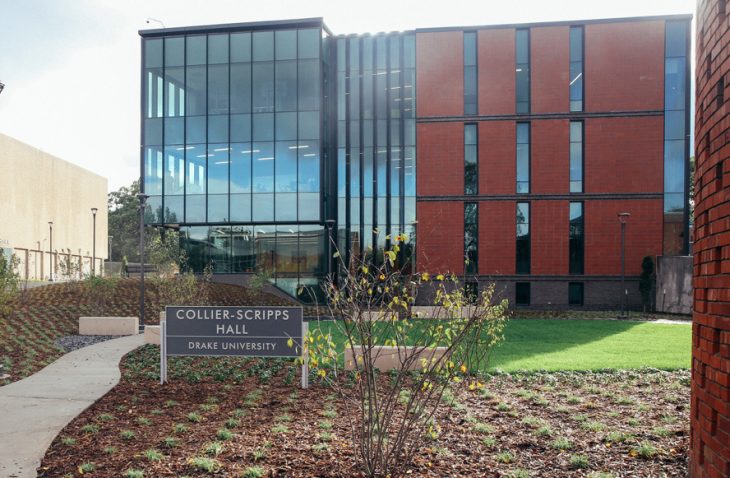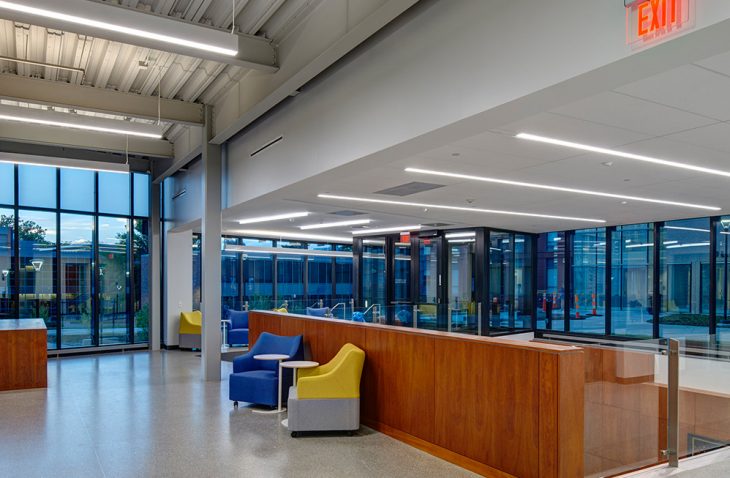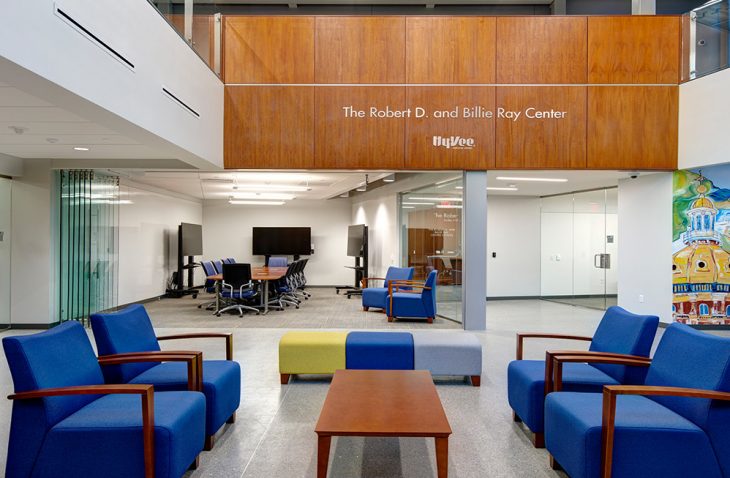New Math, Science, and Education Building
TWO GREEN GLOBES RATING
IMEG provided engineering and design services for Drake University’s new 40,000-sf Math, Science and Education Building. The new standalone, four-story building known as Collier-Scripps Hall includes classrooms, offices, and dry labs. Classrooms in Collier-Scripps were designed with emphases on classroom flexibility and educational technology. One classroom features eight digital screens and multiple video projectors; another has walls that double as whiteboards, so students can immerse themselves in complex mathematical formulas.
The lower level of the building houses The Robert D. and Billie Ray Center (previously known as Character Counts). This new ethics center program includes meeting and collaboration spaces, as well as staff offices. The first and second floors house each of the departments within the School of Education. The third floor contains classrooms and faculty offices for the math and computer science departments.
A unique aspect of the project included campus chilled water-cooling source and steam heating source. Sustainable or renewable features of the building includes a real-time reset of the building’s ventilation rate based on occupancy of densely occupied spaces.
The successful lighting design on the project provided energy savings, improved maintenance for the owner, an aesthetically pleasing and functional environment for the students and faculty, and reduced light pollution for the community. Luminaires, layout, and overall composition mirror functionality and integrate with architecture.
Daylight harvesting and integrated shade control were provided at all windows. The lighting in the classrooms, conference rooms, and offices mix high performing volumetric lighting with decorative LED elements in a balance of efficiency and ambience.
Both inside and out, the building’s lighting design went beyond an aesthetic achievement and maximizes sustainability.
The lighting control system incorporated multiple protocols including interfacing with shading and AV systems to deliver a highly functional and sustainable system, which also provided ease of use for the end users. Creating a comfortable work environment while maximizing sustainability and minimizing cost was one of the lighting design challenges.










